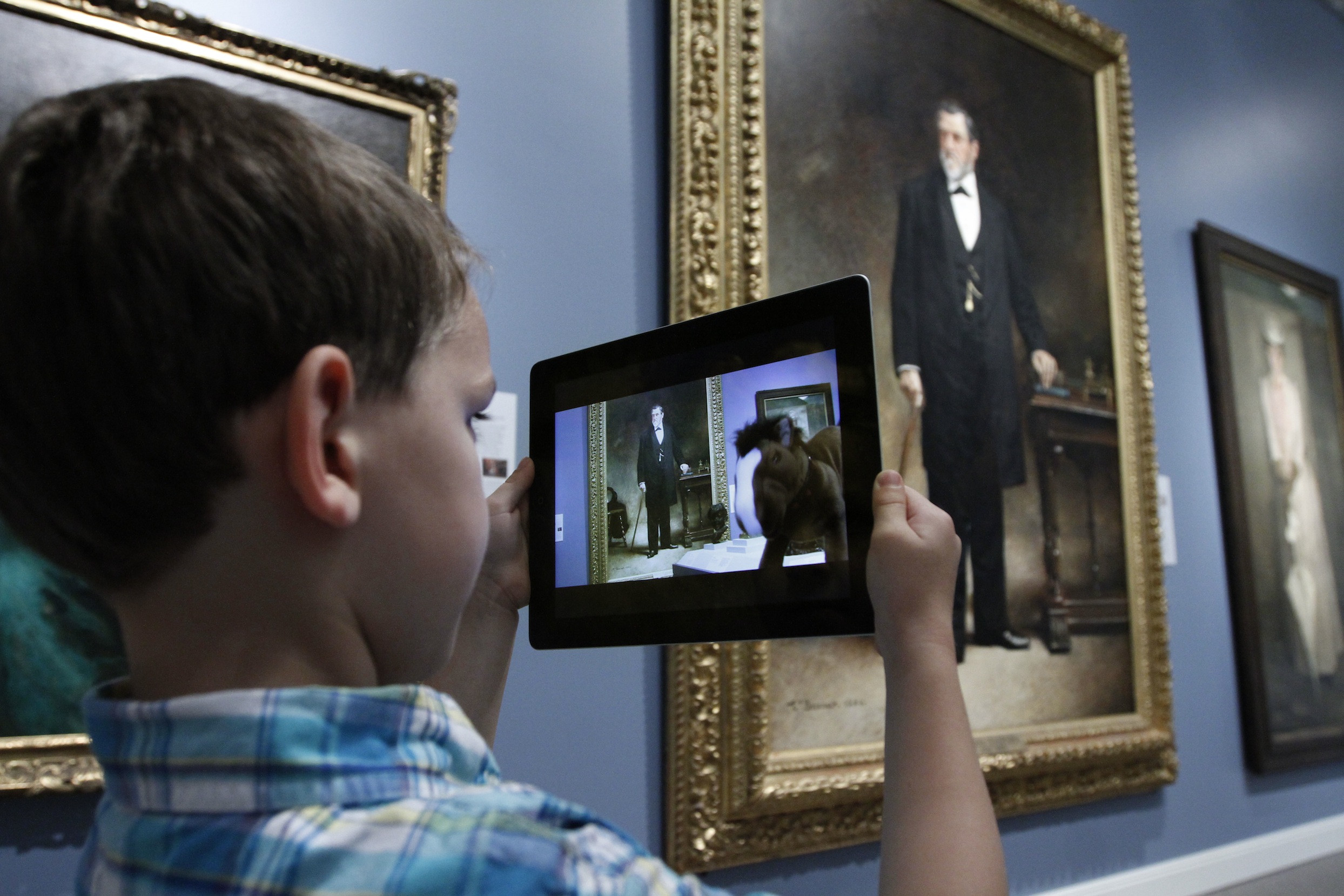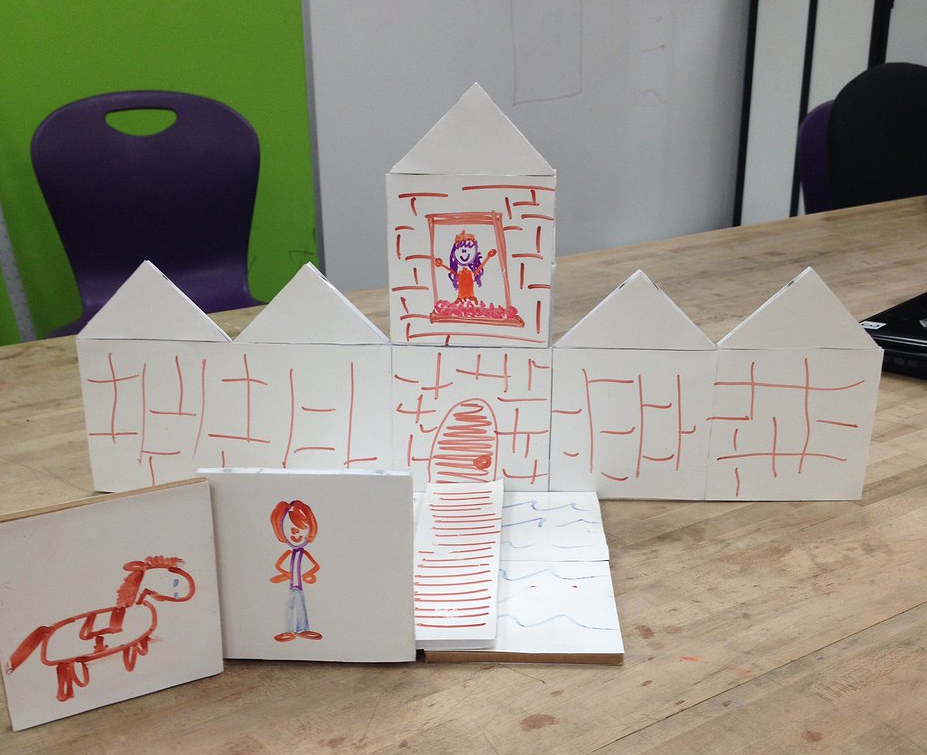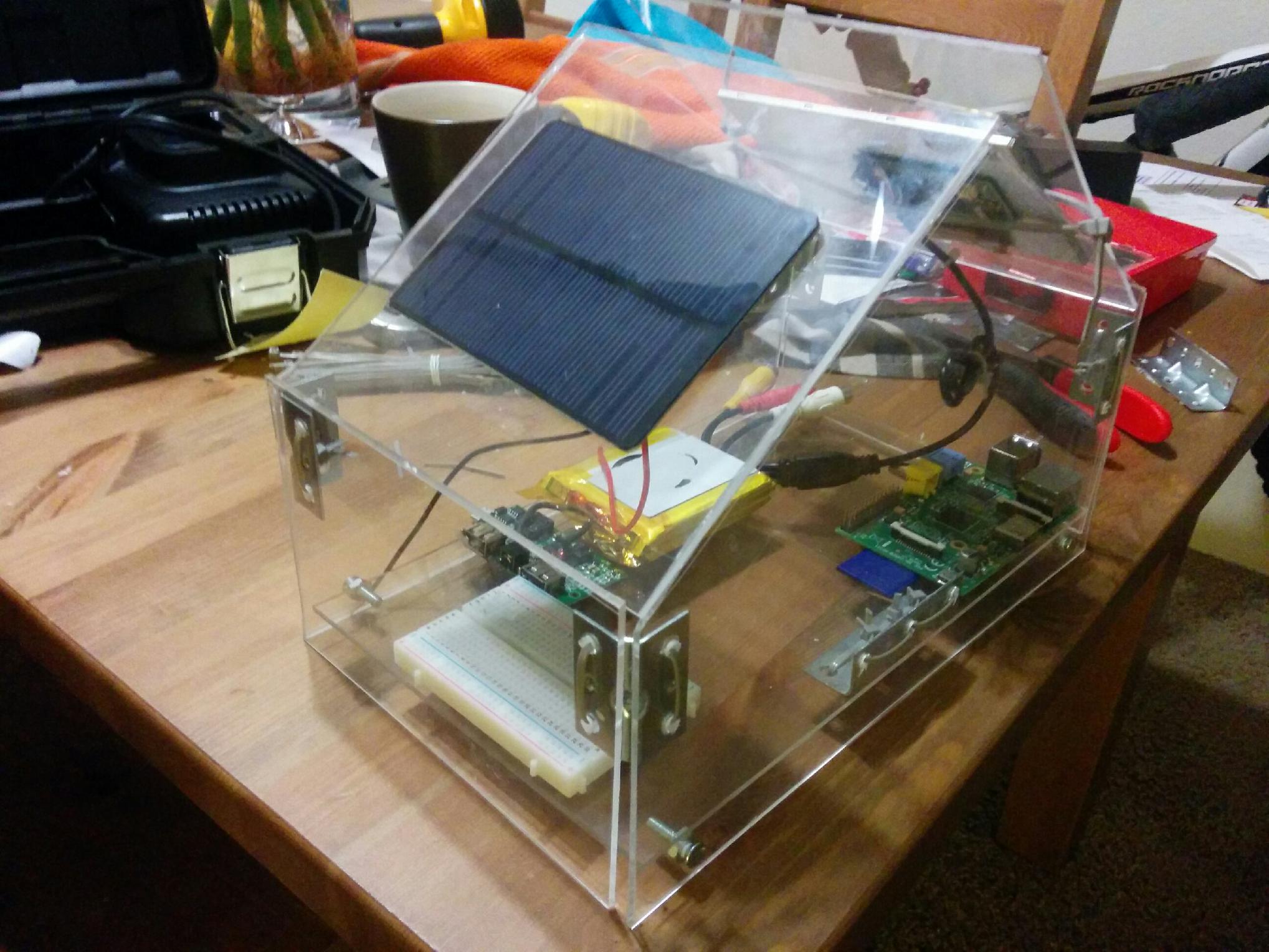



View our Facebook album of the Aug. 1 LDT Expo here, and read more about the projects below.
For Rhoda Wang’s “Kibuni,” it was memories of building forts as a child. For Farah Weheba’s “Beity,” it was Syrian children refugees at risk of suffering post-traumatic stress disorder. For Kay Christensen’s “Make Me,” it was her music background along with people’s apparent lack of time to do creative things.
Their inspirations came from different sources, but their common desire for designing educational and creative tools is what led these three graduate students and 16 others all to the Stanford Graduate School of Education's Learning, Design and Technology master’s program.
The LDT Expo on Aug. 1 culminates the yearlong master’s program and represents the chance to turn master’s projects into real-life products, as it has for former LDT graduates.
During the annual expo, LDT students get to showcase their projects before experts, potential investors, their peers and the general public. Thirteen projects developed either individually or in teams by 19 students will be featured this year.
Wang’s project, “Kibuni,” is a building set with dry-erase tiles that can be joined together with embedded self-orienting magnets to form countless 3D creations. An accompanying website gives tips to parents on how they could engage in the interactive play and allows users to submit and share stories and photos of their creations. The word, “kibuni,” which means “creativity” in Swahili, was inspired in part from Wang’s trip with Habitat for Humanity last summer to Africa.
Ironically, during the “learners” tests of Kibuni that Wang conducted at a preschool, a teacher there made a statement exemplifying the creative gap Wang was trying to bridge between builders and illustrators.
“She said, ‘Oh, you should come when the boys are here at the building blocks,’ which I thought was a very interesting remark,” Wang recalled. She also noticed that there was a separate art and drawing section, where female students were gathered.
“You can be a builder or a drawer, and Kibuni merges the two,” Wang said. “You have the option.”
Her early testers took different approaches – all of which affirmed Wang’s design criteria to keep the creative toy open-ended. Some youngsters drew first on the panels and then constructed something out of them. Others decided to build a shape or a scene before drawing on the tiles.
“The goal is to promote creativity in children so they could solve the problems of the future that we don’t know yet,” Wang said.
See a gallery of all projects, with video, here.
Targeting a vastly different user group, Weheba’s Beity is a solar-powered, portable trauma therapy kit in the form of a plexiglass house. Thousands of Syrian children living in refugee camps are showing signs of post-traumatic stress disorder, and Beity (which means “my home” in Arabic) can be a tool for educational providers and refugee caregivers to provide preliminary PTSD therapy and prevention, Weheba said.
The plastic house has a display that shows videos to lead children through mental health exercises like guided breathing or body relaxation. A second model, shaped like an aquarium tank, includes toy fish and features a video about a fish that is being relocated to a new tank – a metaphor for the often orphaned refugees dealing with similar emotions. It prompts the children to think about what they would do or feel if they were that fish, but doesn’t force them to talk explicitly about their own traumatic experiences. The aquarium kit is designed to be used in a classroom setting and can be used also for imaginary play. Children can use markers to draw on the acrylic surface.
The UOSSM, a Syrian medical relief organization, has expressed interest in the mass production of Beity and using the kits at resettlement projects in Turkey and Lebanon, Weheba said. While it cost about $100 to build the prototype, the estimated production cost at larger volumes will decrease to about $30 per house, making it more feasible for nonprofit organizations to implement, she added.
The video content and mental health exercises incorporated into Beity were all designed under the supervision of psychiatrists and social workers at Stanford who specialize in children’s trauma or refugee resettlement care. An LDT alumnus who currently works in the Lebanese education administration also gave valuable input, Weheba said.
Weheba, who is from Egypt, has followed the Syrian conflict since it began. During her work for a bachelor’s degree in psychology from Stanford, she studied psychological pathology and resilience and was thrilled to be able to apply her passion of working with children’s media to designing a solution under the LDT program.
“I came into LDT to learn more about how to produce children’s media, so making something for a first response clinical treatment is a dream,” she said. “This is even better than what I could have imagined – to benefit my community and combine all of my interests in psychology, trauma release, and children’s media.”
Weheba’s prototype is geared for Syrian refugees, but its Arabic content can be useful for other Middle Eastern countries as well, she said.
Meeting needs
The master’s projects this year range widely. Evan Rushton and Kerri Glennon’s “StickyUnit” is a web-based teacher-training tool on new math standards. Angad Singh and Natasha Prats’ “Expressway” is a car-game app designed to get parents and kids to make up stories about emotions based on scenes they see while on the road. And Jennifer Lau’s “LittleBooks/Libritos” is an interactive iOS app that uses short 500-word stories to help people learn and practice a second language.
The key goal of each project is to provide a research-based solution to a learning problem, said Karin Forssell, director of the LDT program.
“Design and technology are two sides of the same coin – they're both about meeting people's needs,” she said.
Modern technologies, such as the iPad and smartphones, have shifted the dynamics of developing learning tools and have made it easier to apply them in the real world, Forssell said.
A previous LDT project from 2009, TeachAIDS, for instance, is now used in more than 30 countries, bringing an innovative and culturally sensitive approach to educating people about HIV prevention. The web-based interactive software is now compatible with a range of mobile devices as well as available on DVD.
Another example, Go Go Games, which originated as an LDT project in 2012, is an iPhone app that converts proven therapy methods into a series of casual games to support children with Autism Spectrum Disorder. Motion Math, first shown at the LDT Expo in 2010, now offers a slate of math exercises cleverly disguised as mobile games complete with birds and guppies.
For this year’s expo, Meredith Downing and Renee Bruner designed TandemArt, a web-based museum companion for preschoolers that can be accessed from a tablet or smartphone.
The software, designed specifically for Stanford’s Cantor Art Center and narrated by an animated version of Leland Stanford Jr.’s racehorse, Sallie Gardner, takes children and their caregivers on a choose-your-own scavenger hunt and guides them to do hands-on activities tied to pieces in the art collection.
For instance, when the child finds Edgar Degas’ dancer sculpture in the museum, the child is invited to mimic the pose of the dancer and her feet posed in the shape of a “T.” Then the user is encouraged to see what other letters of the alphabet they can form with their bodies.
The pair’s master’s project is specific to Cantor, but Downing said they envision expanding the concept of TandemArt to other museums.
“Most museums are focusing their technology on adult learners and older, literate children,” Downing said. “TandemArt is definitely a much more fun audio guide for kids under six because it’s a full sensory experience and doesn’t just rely on sight or sound.”
Learning and creativity should continue into adulthood, said Christensen, another LDT student. Christensen, who has a teaching background and a bachelor of arts in music, found that she stopped doing creative activities after she started working.
That’s why she designed “Make Me,” a smartphone app to help adults engage in bite-size spurts of creativity in between their busy lives.
Aimed at do-it-yourself or creative types who say they don’t have the time or are too tired from their jobs to do larger projects, the app will provide a steady supply of creative tasks that can be completed in five to 10 minutes, using materials that are commonly found at home or at an office. Users could also share their creations via an online forum.
In one task, for instance, the user is asked to design a simple game for a five-year-old. In another, the user must choose three ordinary objects at their desk and figure out how to make something else out of them.
Perhaps in an odd twist, Christensen’s project will eventually prompt someone else to pursue an LDT degree.
More information:
The LDT Expo will be held Aug. 1 from 4 p.m. to 6:30 p.m. in CERAS. The event is free and open to the public.
The save-the-date link, with map and directions, is here:
https://gse-ldt.stanford.edu/news/save-date-ldt-expo-2014
For a gallery of the projects, and to see video, click here:
https://gse-ldt.stanford.edu/students/ma-projects
___
May Wong is a freelance writer who frequently covers research, news and events at the Stanford Graduate School of Education.
Subscribe to our monthly newsletter.